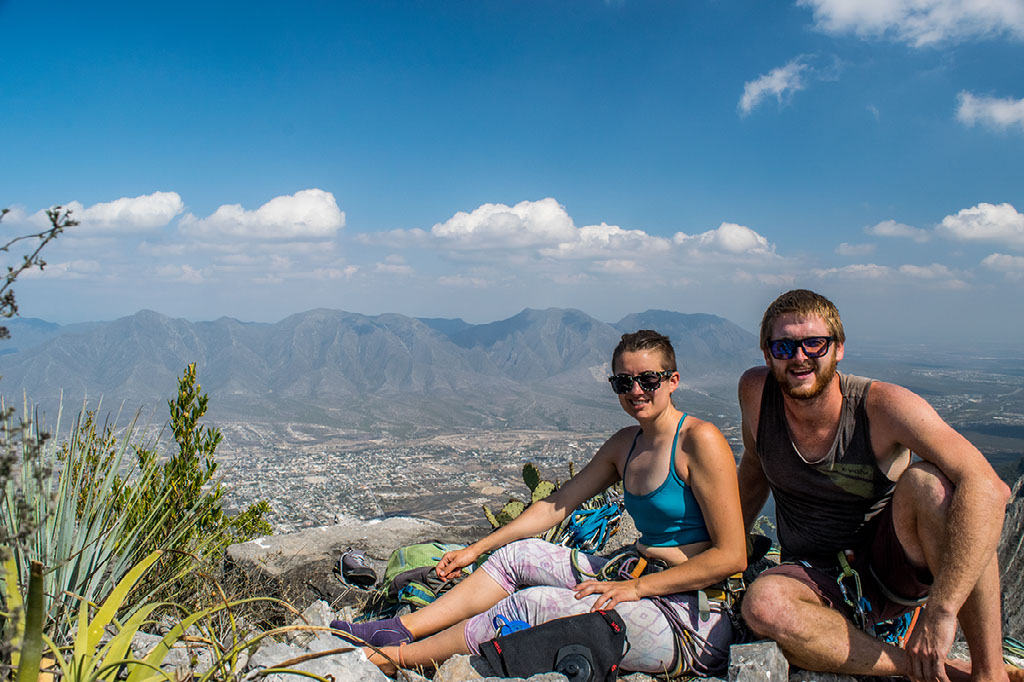The North American Clip-Ups A journey to the continent's longest sport routes
In the world of climbing there are single pitch routes and multi pitch routes. Multi pitch routes are routes that go, typically, higher than 100 feet off the ground. More often than not, these routes go for 300-1000 feet before reaching the top. Routes that are 2,000 feet or longer are in a league of their own. Across the 3 North American countries there are many routes that are 1,500 feet or longer but not many are completely protected by expansion bolts. Each country has their longest sport climb and to climb one, in a day, is a notable accomplishment for a climber that they might never repeat in their lifetime. A few, however, will strive to climb all of North America's top bolted routes.
The novelty of climbing a 2,000 foot long route with very minimal climbing gear is not lost on climbers. Typically, when you climb a long route you are placing your own gear in the cracks. This means you might be carrying 10 or 15 pounds of protection on your harness; but in the case of these routes you might be carrying 3 to 5 pounds of protection. You have a simpler day, spend less time fiddling with gear and route finding is as easy as a connect the dots game since there is a line of bolts going up for 2,000 feet. This leads many climbers to discount the "struggle" required to climb a long sport route but the struggle is still there; the effort is still put forth and the summit is still enjoyed. In the end, climbing is still climbing whether you are clipping draws or placing cams. What is important is the experience.
North Bend, Washington, USA
Chances are that when you drive on Interstate 90 towards North Bend it will be cloudy, foggy or raining. The tops of the peaks are obscured by the opaque cloud cover; the hillsides are hidden beneath dense deciduous and emerald evergreens. Among this lush and teeming environment are cliffs and crags that are almost always hidden from the untrained eye.
I grew up only 25 miles from North Bend. I went there often as a teenager to go to the Outlet Malls; shop for new basketball shoes or get my new school clothes. Every time I went the vertical world that lay behind the mist stayed hidden and out of site. As with most stories, it took moving away for this world to come into view. I had learned of a highly controversial and somewhat illegal route named Infinite Bliss. The trail head lay only 90 minutes from where I grew up. This route is where it all began: the journey to climb the continent's longest sport climbs.
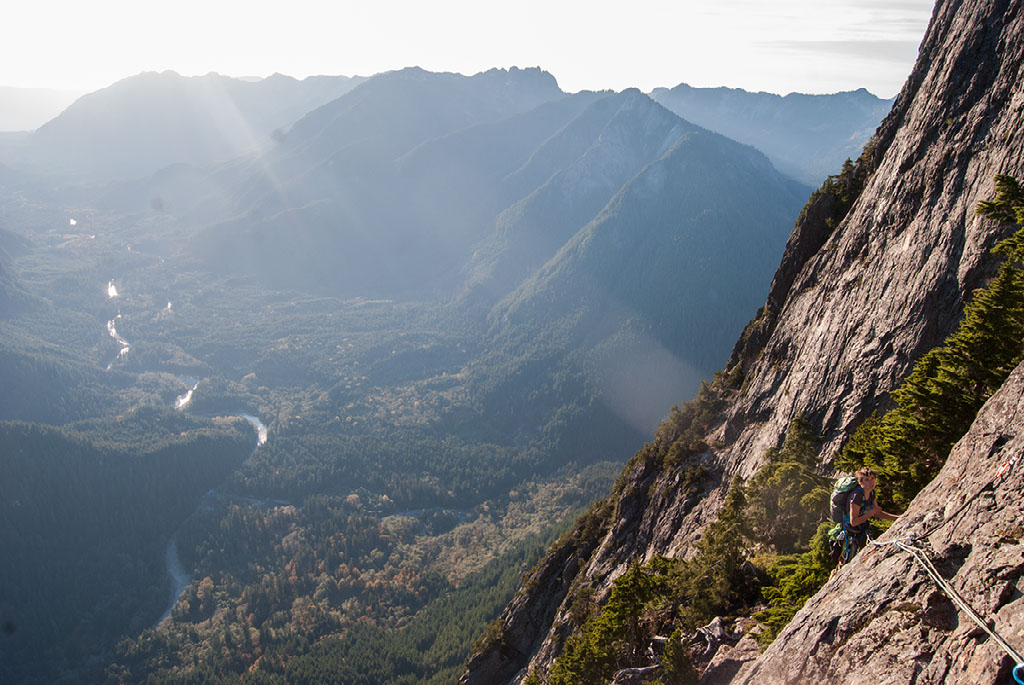
Infinite Bliss (IV 5.10c/d R), 2,800', Mount Garfield
When I first decided I wanted to climb this route I was not a traditional climber, I did not own any trad gear let alone know how to place it. That is why and how I found this climb. The entirety of this 2,800 foot long route is protected by expansion bolts. To traditional climbers this is a travesty, a mistake, a bane; to a sport climber this was heaven. The route itself has a shady past. Maps showed the West Face of Mount Garfield as a section of a mountain that lies in the Okanogon-Wenatchee National Forest. Because this section was "normal" forest service land the use of fixed climbing anchors (i.e. expansion bolts) was permissible. The route was put up; hundreds of holes were drilled and expansion bolts were put in place. As time would tell, the maps were incorrect. The entirety of Mount Garfield technically lies in the Alpine Lakes Wilderness - a near 400,000 acres of land that was designated as "wilderness" in order to help preserve and protect the natural beauty for decades to come. One stipulation of such designation: no fixed climbing anchors of any sort may be left.
This issue threatened the life of this route. Many still believe that the route should be chopped. The number of users and frequency of ascents have been recorded (so I have been led to believe)- too much use and they might decide to chop the route and if only a few climbers use it then it might keep its place. Information on this route was hard to find in 2011. Topographic maps and route beta posted to the internet was quickly removed by moderators. The fear? Attracting too much attention. Nowadays, despite more readily available information, accidents resulting in death, and a seemingly steady stream of climbers the National Forest service has done nothing about this route.
To climb Infinite Bliss a climber needs to not just own the gear but to have experience, efficiency and a capable partner. You climb 2,800 feet over 23 pitches; you encounter loose rock; wetness; 100+ foot pitches, some with 2 or fewer bolts; and a few pitches with no protection. Ryan Anderson says that "Infinite Bliss was a wet romp up slab."
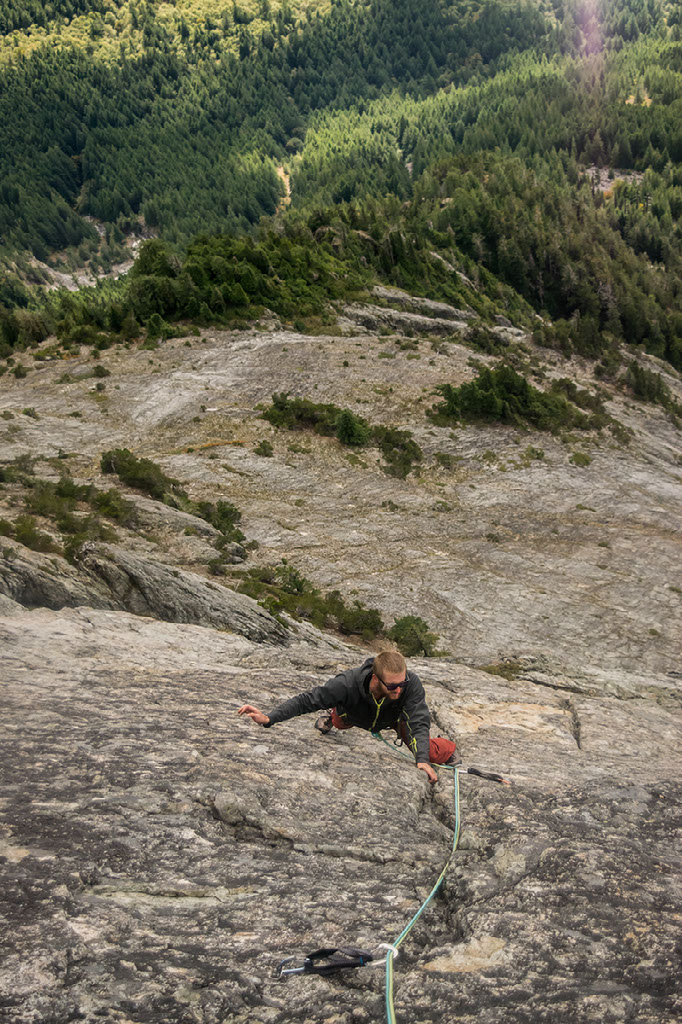
I have climbed this route 2 and a half times now. The first time I did not reach the summit but I went back. Since that first attempt, I have stood on the summit twice with two different partners. Every time I have been on this mountain I have come to realize all the reasons why this route should exist. It serves a purpose in the world of climbing. A route up a face that does not have an abundance of cracks and fractures to place removeable gear. Instead, it gives this mountain, this route and its view life: an otherwise un-visited peak and never-seen view has been given an opportunity to share its gifts. And in the words of George Mallory, we climb it "because it's there."
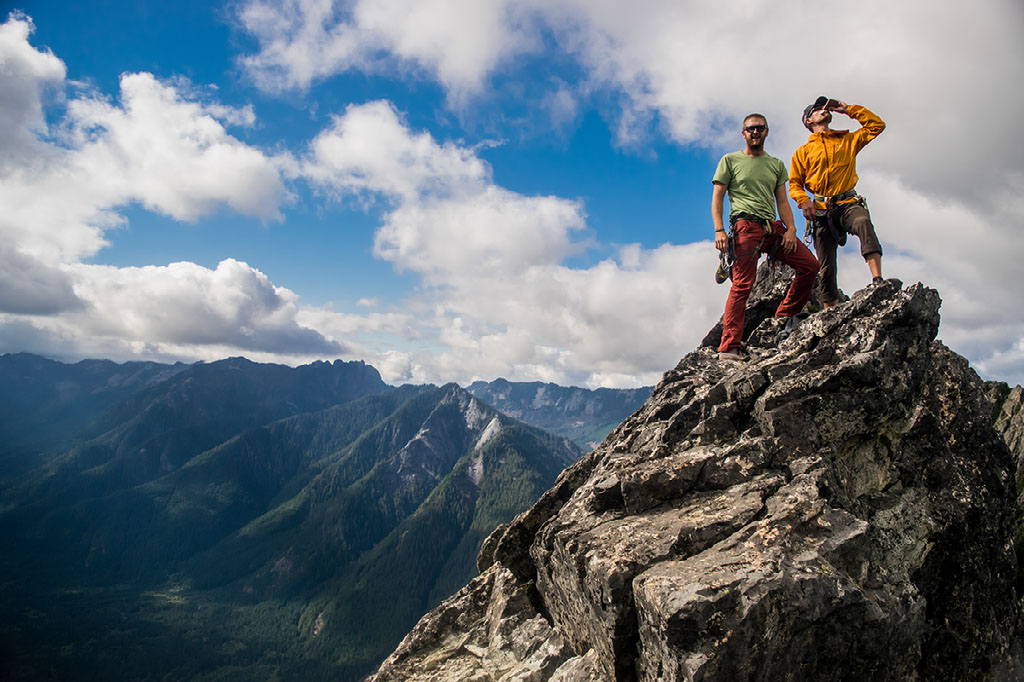
Canmore, Alberta, Canada
This small mountain town that just over 13,000 residents call home is in the heart of the Canadian Rockies. An epicenter of outdoor pursuits, Canmore is home to world class climbing and skiing. Nestled closely against the surrounding peaks, Canmore has mythical climbing right out its front door. Ha Ling, is at the center of Canmore mythology. This peak towers over Canmore like impending doom. Rising nearly 4,000 feet above the town center, it has attracted attention for decades
In 1896 a Chinese cook named Ha Ling had taken a bet for $50 that he could climb to the summit of this towering unnamed peak and descend back to town in 10 hours or less. Ha Ling met this challenge with huge success as he reached the summit, placed a small flag and descended back to town in just under 5 hours. Many, however, doubted his story as his flag was too small to see from town. The following day, he guided a handful of the nay-sayers to the summit and back thus solidifying is $50 winnings.
A later-added prize was given to Ha Ling; since the peak had no name it was suggested that it should be called Ha Ling Peak - quite the socially progressive move in the 1890s. Not everyone was on board, the suggestion ignored and more with-the-times name was given, Chinaman's Peak, and a century long debate sparked. Over the next 100 years, attempts, petitions and committees were formed to change the racially derogatory name back to the originally suggested title of Ha Ling. Despite changing times, residents and mayors felt that the name was part of the town's history. Finally, though, in 1998, Canmore removed the insensitive name and gave it its true name, Ha Ling.
Sisyphus Summits (III 5.10d, 1,900 feet)
I had purchased a Canadian rock climbing guide in 2011, not because I had a trip planned but in hopes that one day I would. As I spent my free time thumbing through this glossy, full of photos book I turned the page and off jumped the impending north face of Ha Ling. Its steep limestone face rises above Canmore just begging to be climbed. I was going to climb it.
The myth of Sisyphus is one of eternal struggle. Sentenced to spend the rest of eternity pushing an immeasurable boulder up an unrelenting hill to only watch it roll back down once he finally crested the top. This repetitive punishment, to constantly endure an everlasting struggle for that brief moment of success at the top only to head downhill and repeat this rigorous ordeal, is one that climbers know all too well.
Whether you are a pebble wrestler, gym rat, sport wanker, crack addict, alpine sufferer or mountaineer you have experienced the fate of Sisyphus: to toil tumultuously because of ones own actions; to suffer because of your own controllable fate; to succeed, head back to the bottom and repeat your rewarding struggle. It is this revelation about the Sisyphus inside every climber that gives insight to the route name "Sisyphus Summits". You expect to work hard, struggle and toil up a route named after its eternally toiling hero and know that it will be a short lived success but quickly repeated.
The route starts by ascending a seemingly eternal field of tallus until you finally reach the base of the 1,900 foot tall limestone wall. You spend hours working, struggling and succeeding up the wall's 23 pitches. You pull over the top of this North Facing Canadian behemoth to a summit filled with people. Not a welcome party; not other climbers but fellow Sisyphians who toiled up the backside, up the nearly 2.5 mile uphill trail to reach their own summit. To revel in its view and shortly thereafter head down hill to repeat the struggle somewhere else.
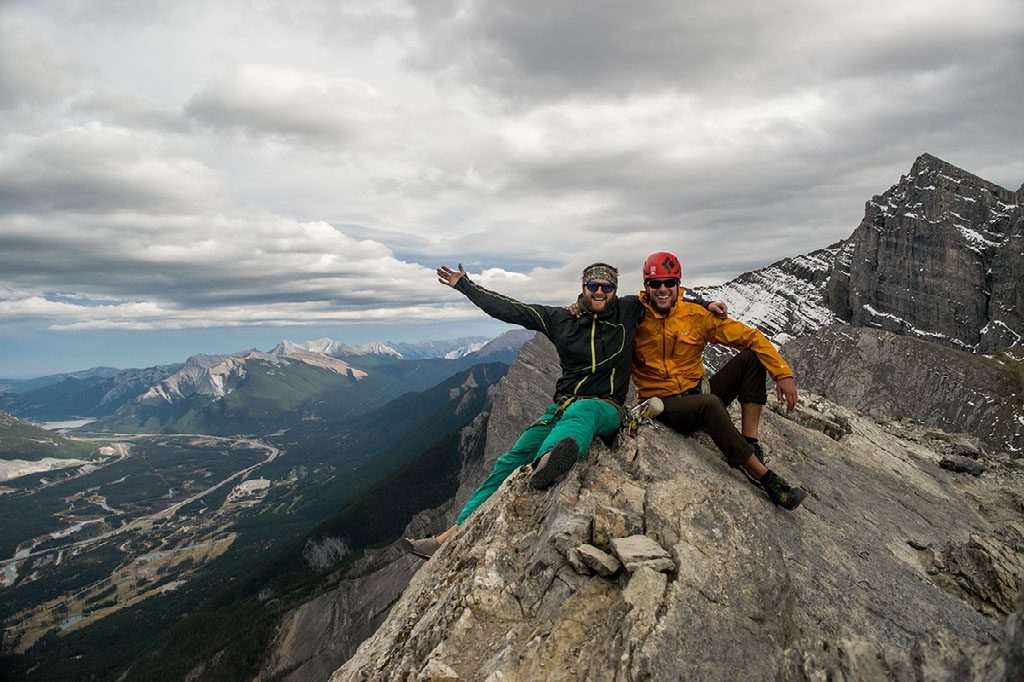
Hidalgo, Nuevo Leon, Mexico
If you find yourself in this somewhat sleepy town of Mexico you will not notice much about the town but much about the view. Hidalgo is home to El Potrero Chico (the little corral). This chain of limestone mountains and ridges forms a circle, the only entrance is the gap on the Northern side. This entrance with steep and exposed limestone faces became a well-known and world-popular climbing destination.
Hidalgo is home to a Cemex plant, the driving economic factor in Hidalgo. But up the hill, only 2 miles away is a cluster of posadas (inns) that make their living and purpose on providing the world traveler a place to sleep and call home. The buzz is more apparent in the winter, when the temperatures are more pleasant for climbing. More than a hundred travelers, each staying at any of the half a dozen posadas, call Hidalgo home each night during the busy season. Cooking in communal kitchens, sharing stories, gathering route information or getting a good night's rest before the climbs of tomorrow.
An oasis for climbers. It is no wonder that the word posada has a religious connotation of when Mary and Joseph were seeking a nights refuge in Bethlehem only to find quite modest, yet purposeful, accommodations. This dry and arid environment is made comfortable by these establishments; turned this place into a destination for the world climber.
Time Wave Zero (II 5.12a, 2,300')
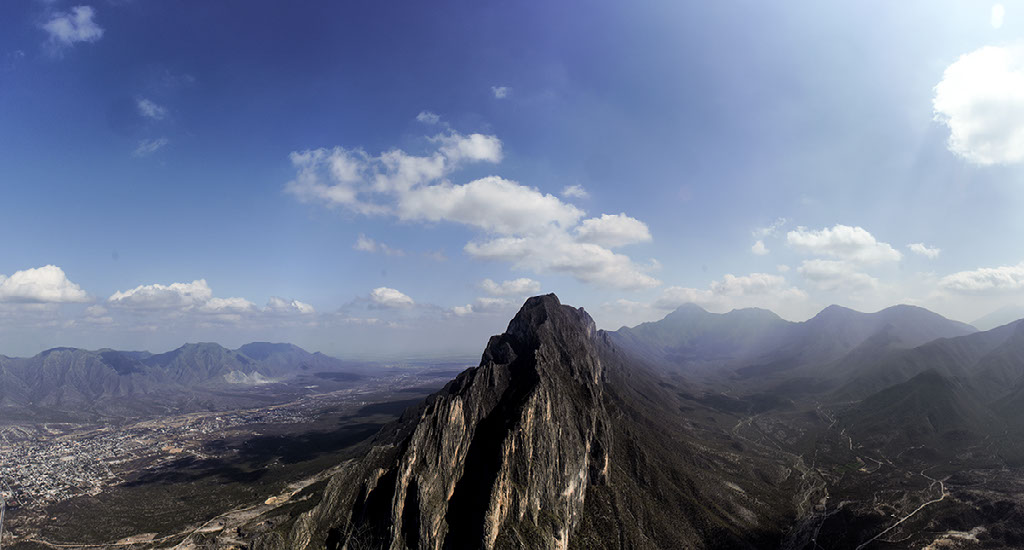
This is Mexico's longest sport climb and named after Terrence McKenna's Time Wave Zero Theory. The wave plots a continuing ebb and flow; movement from one direction to another; increase in stability and influencing change. A topic and theory that you can quickly become lost in, confused and a bit unsure. Topics like fortune telling, doomsday and amazonian psychedelics go hand in hand when brushing up on the history of the Time Wave Zero Theory.
The main gist is that this time wave is a fractal wave: the shape of the wave is repetitive whether you are looking at it on the macro scale or the micro scale, i.e. the shape of the whole wave is found when you zoom in and look at a smaller section. In a more practical example: the ups and downs of your entire life mimic a wave that is equal to the ups and downs of your everyday life; each wave has its ups caused by increased stability and downs caused by factors that are influencing change in your life.
After climbing Infinite Bliss and Sisyphus Summits, I can no longer ignore the name given to these types of routes. The experience and emotions caused by these long clip ups can only be summed up by comparing it to the Time Wave Theory. In a matter of a few thousand feet your physical ability and emotional state will undergo a wave like pattern culminating at the summit. Ups and downs, positives and negatives, stability and change.
Time Wave Zero, the route, is south facing, long and at times it climbs steep terrain. This creates a challenging route, even for those who have experience in long climbs. You can expect to work hard on a few pitches, relax on a few others but in the end, when you reach the summit you will be at peace. If we have learned anything from Terrence McKenna's theory it is that everything in life has its ups and downs and in the end you will always experience both, no matter what you are doing.
